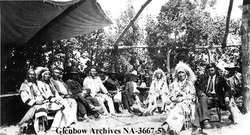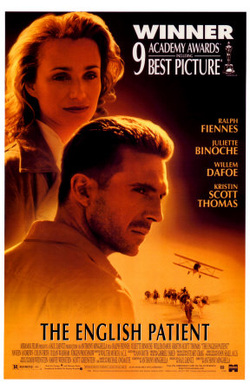My first impression of this book was confusion. At first, I thought this book was going to be a story on Native America’s creation. However, as I read further, I was confused because other characters started jumping in and out within the story. I began to understand why Professor Erika emphasized this course to find allusions. The book seems to have so many allusions within the story that I cannot understand and find because of my lack of knowledge of Canadian and Native American history. I also found many nonsensical comedies in the book, although I did not understand most of them. It seems as if King is mixing together the way that Westerners and Native Americans tell their stories.
King notes the various unanswered questions in the history of Canada. He brings various historical, religious, and intellectual elements of both the Native Peoples and the Western people in North America. It seems that King himself knows both sides of the culture, yet points out the stories that we as western culture have been neglecting. Thus, he discusses the idea of ‘crossing borders.’ All four Native characters in the book are 400 years old, came from Florida to Canada, where the Blackfoot live in Alberta. It brought me to question whether they really exist, or exist only in some people’s minds. Through King’s ingenious way, he brought me to see that there are still barriers in Canada that we need to understand what we still do not know about the Native people’s history of Canada. There is much ignorance and lack of understanding by the general population of Native people’s lives and history.
Because I do not know much about Canadian history and literature, I was not able to find many allusions to other historical characters or literature. However, growing up in a Christian family and believing in the Christian faith myself, I found many Biblical allusions in Green Grass Running Water. One of the examples of the allusions to the Bible was when Coyote stated “I read the book.” Further, “Young Man Walking on Water”(meaning Jesus Christ), the creation story of Adam and Eve, and the story of Noah and the Flood are also allusions to the Bible. Personally, the jokes were very sensitive to me rather than funny. It was cutting and critical towards the Christian culture and faith.
Another allusion that I was able to find at the ending of the book was when the dam burst at sunrise on “Sun Dance” day, which alludes to an important ritual in Native People’s culture. I learned from last year’s Native Art History class that the Sun Dance is an important ceremony of the Great Plains Indians. This ceremony dance is significant where one ‘relives birth’ by being cleansed through the Sun dance. The break of the dam because of Coyote’s dancing was interesting and satirical because it seemed that King was saying that there needs to be a “cleansing” of what we ‘Canadians’ think as truth. This book was difficult to understand at first, but it is very interesting how King does not pander to the production of explaining the ‘truth.’ Rather, he challenges and even tricks the reader into finding out for meaning of his story for themselves. Through his book, I would like to learn much about the history of Canada and through the many allusions he makes, learn more about the historical figures of Canada’s history, Native People and all Canadians.



 RSS Feed
RSS Feed